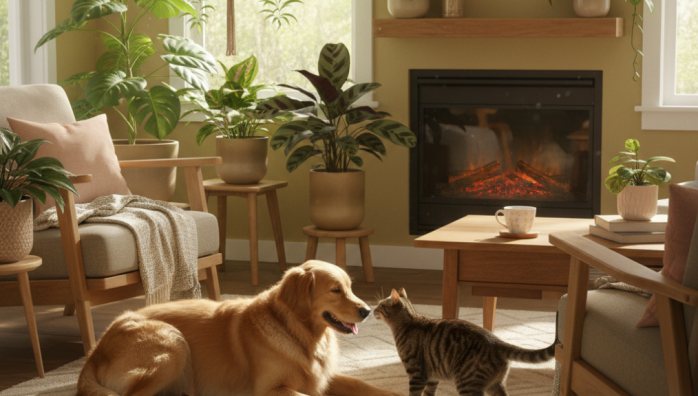Safe Houseplants for Your Pet Friendly Home
by admin in Pet Care Basics 13 - Last Update November 19, 2025

I\'ll never forget the moment I walked into my living room to find my new kitten, Leo, batting at and then chewing on the leaf of a beautiful plant I had just brought home. My heart sank. Was it poisonous? In a panic, I snatched him up and spent the next hour frantically searching online. It turned out to be a close call with a mildly toxic plant. That was the day I realized that my love for houseplants and my love for my pets had to coexist safely. It took some research and a bit of trial and error, but I\'ve since filled my home with greenery that gives me peace of mind.
Why choosing pet-safe plants is non-negotiable
For me, this isn\'t just about avoiding a minor tummy ache. Many common houseplants, like lilies, sago palms, and dieffenbachia, are extremely toxic and can cause severe illness or even be fatal to cats and dogs. The risk is simply not worth the aesthetic. I learned that creating a safe environment is the most fundamental part of being a responsible pet owner. It means I can relax and enjoy my home without constantly watching over my furry companions\' shoulders.
My favorite tried-and-true pet-safe houseplants
Over the years, I\'ve curated a collection of plants that are not only gorgeous but have also passed the pet-safety test in my own home. Here are a few of my go-to\'s that are widely available in the US and Europe.
The spider plant: an oldie but a goodie
This is probably one of the first pet-safe plants I ever bought. The Spider Plant (Chlorophytum comosum) is incredibly resilient and its arching leaves and little \'babies\' are so charming. My cats are fascinated by them, but thankfully, they are completely non-toxic. They are also fantastic air purifiers, which is a huge bonus.
Calathea (prayer plant): stunning and safe
If you want a pop of color and pattern, look no further than the Calathea family. I have a Rattlesnake Calathea, and its intricate leaf patterns are stunning. They\'re known as \'prayer plants\' because their leaves fold up at night. I love watching this daily ritual, and I rest easy knowing the leaves are safe if my curious dog gives one a little lick.
Money tree: for good fortune and peace of mind
The Money Tree (Pachira aquatica), with its classic braided trunk, brings such a wonderful, calming energy to a room. It’s completely safe for pets and relatively easy to care for. It\'s a statement piece that doesn\'t come with any hidden dangers for your four-legged family members.
A quick note on \'safe\' doesn\'t always mean \'indigestible\'
Here’s an important lesson I\'ve learned: just because a plant is non-toxic doesn\'t mean your pet should eat it as a salad. Ingesting a large amount of any plant material can lead to vomiting or an upset stomach. I see \'non-toxic\' as a life-saving label, but I still discourage my pets from treating my plants like a buffet. If your pet ever seems unwell after eating any plant, it\'s always best to chat with your vet. My advice comes from my own experience, but a veterinarian\'s guidance is invaluable.
Tips for creating a harmonious plant and pet home
You can absolutely have a beautiful, green home and happy pets. Here\'s what has worked for me:
- Go vertical. Hanging planters are my best friend. They keep plants completely out of reach while adding a beautiful design element.
- Use high shelves. Place smaller pots on bookshelves or mantels that your pets, especially dogs, can\'t access.
- Provide a distraction. I grow a small pot of \'cat grass\' (usually oat or wheat grass) for my cats to chew on. This often diverts their attention from my decorative plants.
- Know your pet. My dog couldn\'t care less about plants, but my cats are curious. I tailor my plant placement strategy based on their personalities.
Creating a pet-friendly jungle in your home is incredibly rewarding. It just requires a little bit of knowledge and planning. For me, the peace of mind is worth every bit of the effort.














